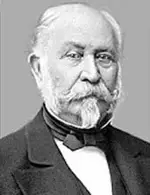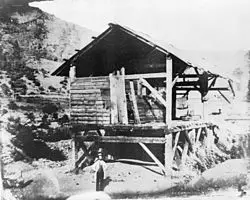John Sutter: California Businessman of Gold Rush Fame
John Sutter was one of the most famous names in California history. A successful and wealthy businessman, he was the victim of circumstance in that gold was discovered on land he owned and he failed to profit from it. 
He was born John Suter in Kandern, in what is now Germany on Feb. 23, 1803. He went to school in Switzerland, attended a military academy, and then went into business in Burgdorf, Switzerland. In 1826, he married Annete Bubold; the pair had five children. Sutter struggled in business and, in 1834, left his family behind and sailed to America. Sailing aboard the ship Sully, he left Le Havre, France, and arrived in New York, landing on July 14. He added a "t" to his last name and made his way westward, signing on with a wagon train on the Santa Fe Trail, headed for what is now Santa Fe, New Mexico. He found slightly more success in various business ventures in the next few years, living in both Santa Fe and in Missouri and acting as a guide for travelers heading from the Midwest to the West. His native language was Swiss French, and he had learned English and Spanish–all of which helped him communicate with other immigrants seeking their fortune on journeys west. Sutter had found that he really liked to travel and, as his funds allowed, went west and west, reaching Vancouver (by way of the Oregon Trail) and Hawaii before returning to the North American mainland, heading to Alaska and then ending up in San Francisco, where he landed on July 1, 1839. California at this time was part of Mexico, which in 1821 had become independent from Spain. Sutter found favor with Mexican Gov. Juan Alvarado, who granted the traveler an amount of land on which to settle, in what is now California's Central Valley. (Alvarado's only condition was that Sutter become a citizen of Mexico; Sutter did so.) In California, Sutter enjoyed success and wealth far and above what he had experienced so far. He formed a band of settlers and looked to start his own community. They decided to built their colony, which they called Nueva Helvetia (or New Switzerland) at the junction of the American River and the Sacramento River. The colony attracted trappers and traders. Sutter owned a large amount of land (some sources say nearly 50,000 acres) and became quite prosperous. 
Sutter financed and helped in the construction of Sutter's Fort, finished in 1843 and sporting 18-foot-high adobe walls. Near what is now Sacramento, the fort was a miniature town, sporting mills, shops, and warehouses run by blacksmiths, millers, and merchants. Sutter found himself in the middle of the Mexican-American War, as U.S. forces occupied California in 1846. In fact, U.S. Army troops under the commander of John C. Frémont briefly occupied Sutter's Fort. 
A man named James Marshall joined with Sutter in 1847 in the construction of a sawmill at Coloma, upstream from Sutter's Fort. It was Marshall who discovered gold on Jan. 24, 1848. Sutter tried to keep the discovery secret but was unsuccessful. The Gold Rush was on. Sutter was soon overwhelmed by fortune-seekers, who wasted no time in seizing whatever they could find–food, water, crops, animals, even buildings. Sutter, unable to stop the damage, threw up his hands. It wasn't long before he was bankrupt. The State of California granted him some modicum of compensation in 1864. He went east, living for a time in Pennsylvania. He implored Congress to reimburse him for his losses. He died on June 18, 1880, without getting anything from Congress. Named after Sutter are streets, schools, and cities. His name has become familiar because of stories of the discovery of gold at his mill. |
|
Social Studies for Kids
copyright 2002–2025
David White





